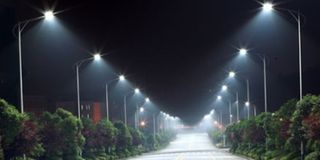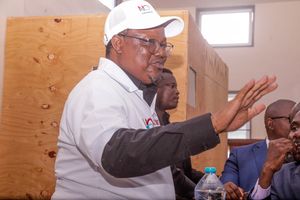Prime
Bright future: The economics of street lights in Tanzania

What you need to know:
- Streetlights can do wonders for Tanzania. Illuminating streets can boost business sales by 13 percent. It can save lives by reducing road deaths and injuries by 16 percent and 26 percent respectively. That equates to about 90 billion saved every year. It has the potential to enhance GDP by 0.6 percent for every 10 percent rise in broadband penetration.
When we examine Tanzania’s history, we have gone backwards in many ways.
If you look at the past, you will see people orderly queuing to board public transportation, but today, we are fighting for space like pigs. You look at the well-planned streets with paved roads in Magomeni, Kinondoni, or Chang’ombe of old and marvel at the madness that ensued afterwards. When compared to the makeshift structures we erect now, schools of yesteryears like Ilboru, Kibaha, and Moshi Technical are in sharp contrast.
What happened to us?
Walking through the twisting, narrow lanes of Stone Town in Zanzibar at night was possible 150 years ago. There was no electricity at the time, but the streets were lit with oil lamps. Electric streetlights appeared soon after, much before they were visible in London. Zanzibar was a metropolis that radiated civilisation over the region.
Not anymore. We’ve lost all sight today, fumbling around in a dark chamber on a moonless night.
When it comes to streetlights, sceptics wonder if further research is needed to prove their utility. I think that is quite strange: What next – research to determine whether people need paved roads, tape water, and internet communications? Common sense is so uncommon nowadays.
The truth is streetlights are a quintessential public good. They make the night bright and safe. They increase opportunities for people to work, study, or have fun at night. And you don’t have to pay to use them.
Streetlights can do wonders for Tanzania. Illuminating streets can boost business sales by 13 percent. It can save lives by reducing road deaths and injuries by 16 percent and 26 percent respectively. That equates to about 90 billion saved every year. It has the potential to enhance GDP by 0.6 percent for every 10 percent rise in broadband penetration.
To shed light on this potential, I engaged Artificial Intelligence to estimate the GDP impact of deploying 200,000 streetlights in Tanzania based on a combination of factors, yielding an impressive Sh14.46 trillion over 20 years. While this is just an estimate, it provides a good idea of what is attainable by doing something sensible for once.
However, a pressing concern remains – Tanzania’s maintenance track record. The concern is warranted – despite its prominence, Kigamboni Bridge is languishing in total darkness now. For some reason, we simply cannot maintain anything we build. Sadly, we are not alarmed by such indiscipline. But what if we could change that? What if we could turn the challenge of maintenance into an opportunity for innovation and empowerment? What if we could create a system that rewards efficiency, quality, and accountability?
To address this challenge, I propose entrusting maintenance and operation to private entities under public oversight. Firms can be assigned responsibilities to oversee maintenance in different districts with clearly defined KPIs. That should make for efficient operations – especially when using smart lights that can be managed remotely. But that’s not all. I also propose that we involve local communities in the process of maintaining and operating the streetlights. We can create a platform that allows citizens to report any issues or malfunctions with the streetlights. We can also incentivise them to participate using different imaginative means. This way, we can foster a sense of ownership and pride among the people who benefit from the project.
This approach opens opportunities for creative approaches to financing the proposed project. We have a spectrum of options at our disposal – categorised as Public Financing, Private Financing, and Mixed Financing.
The public financing avenue taps into the collective strength of the public, including taxpayers and governmental bodies. The tools of choice here are municipal bonds, grants, and donations, channelling resources into illuminating the future. By rallying the community behind this cause, we not only ensure access to essential infrastructure but also foster a sense of shared responsibility and pride in our neighbourhoods.
Similarly, private organisations can play a critical role in this endeavour by introducing novel techniques that combine profit with public benefit. The idea makes use of the business world’s efficiency, innovation, and resources to convert street lighting into a profitable venture. Examples of this category are PPPs with advertising space on lamp posts, corporate sponsorships with branding opportunities, and revenue-generating infrastructure such as internet distribution networks.
Finally, it is possible to deploy mixed financing options. Mixed financing combines the forces of public and private resources through options like utility tariff financing and lease financing. This fusion of funding streams ensures both sustainability and adaptability, enabling us to navigate the intricacies of street lighting financing with agility.
We have the tools to embark on this transformative path, whether through public financing, private partnerships, or a hybrid strategy. The deeper we delve into these multifaceted solutions, the clearer our path becomes. It’s time to turn our visions of well-lit streets into a vivid reality that will lead us to a brighter future for Tanzania.
Again, let there be light.



